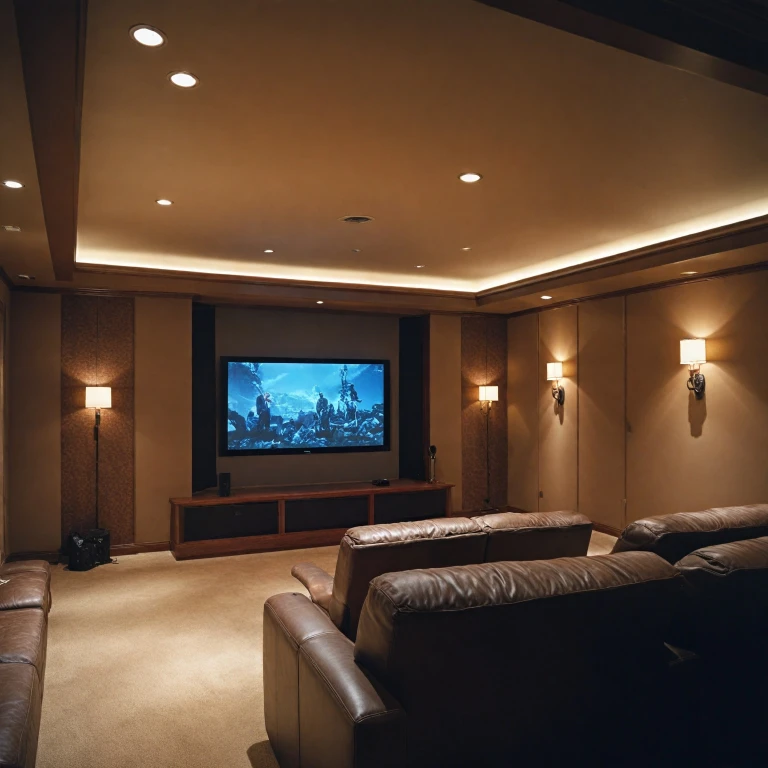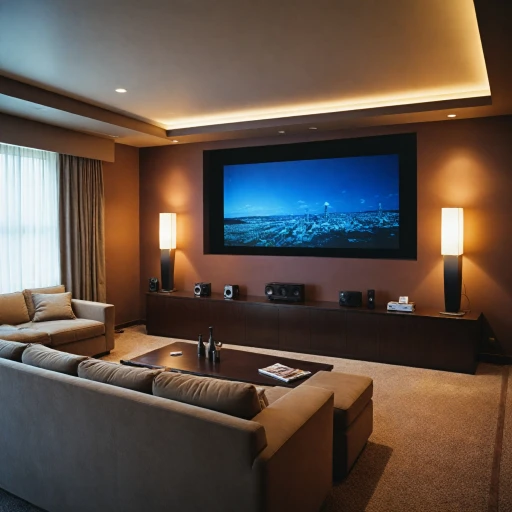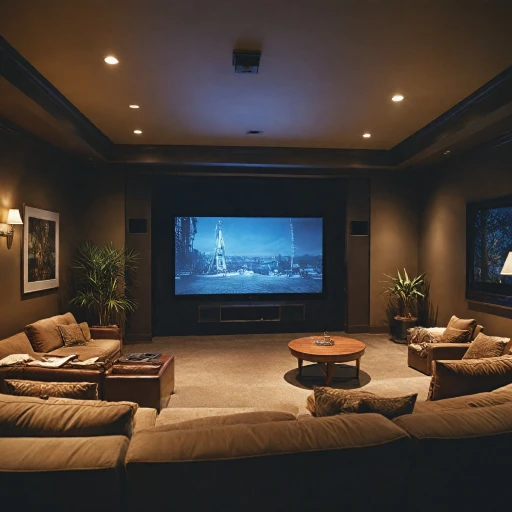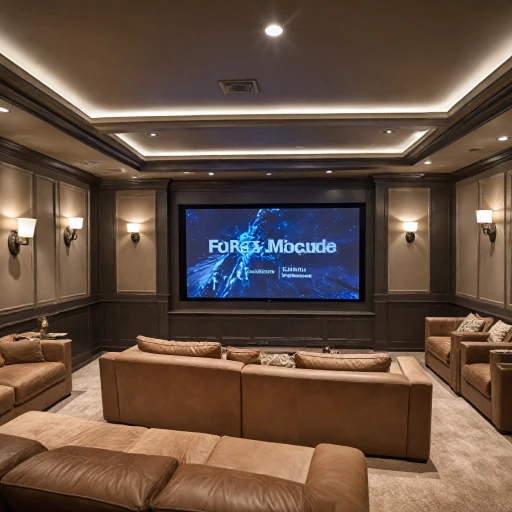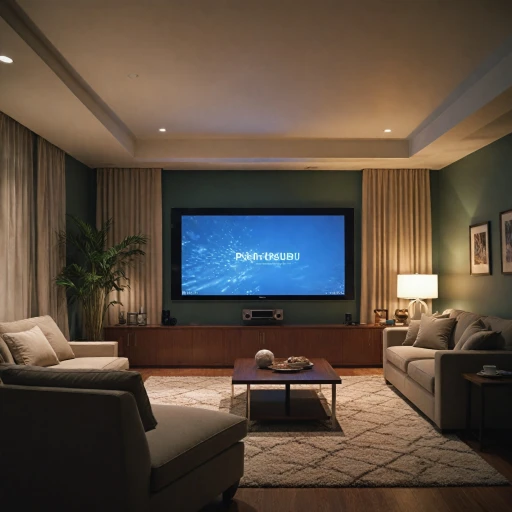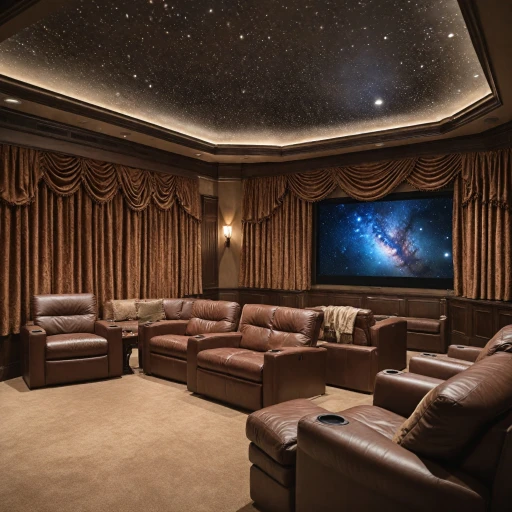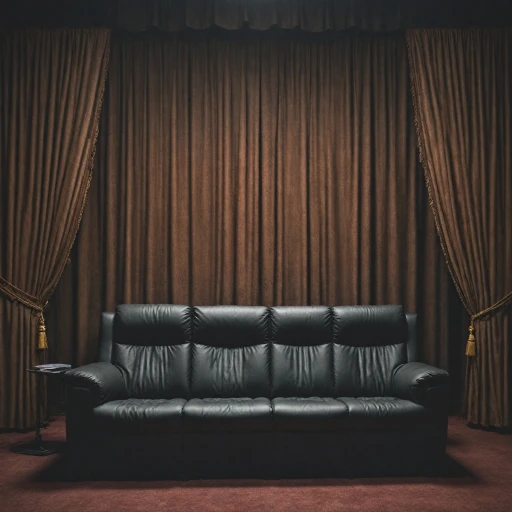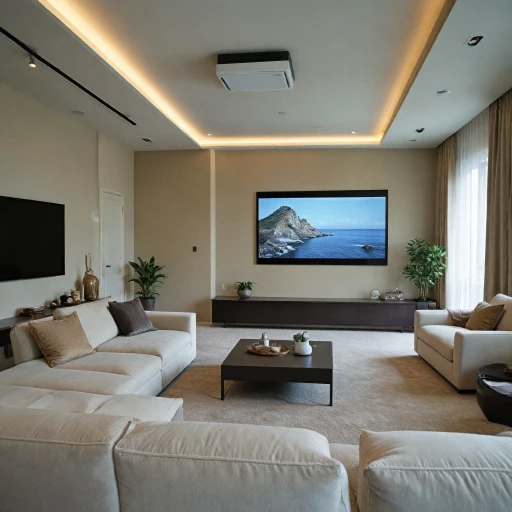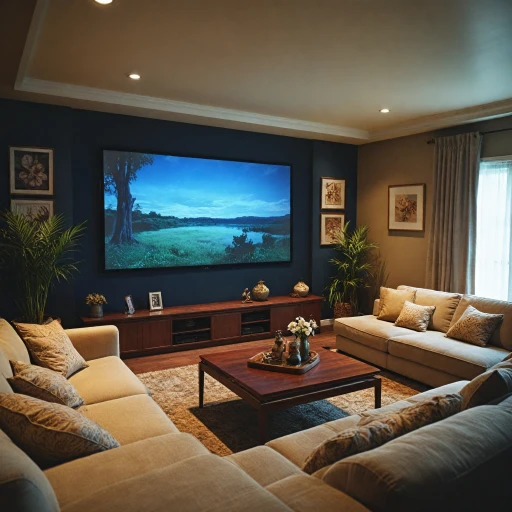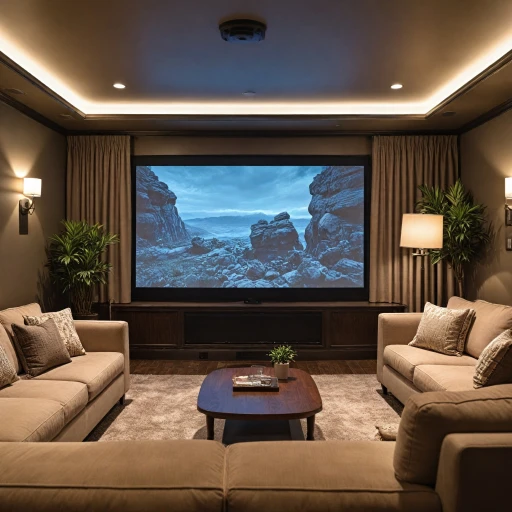Understanding Acoustically Transparent Screens
What Makes Acoustically Transparent Screens Different?
When setting up a home theater, understanding the nuances of different components can significantly improve your viewing experience. Acoustically transparent screens are a unique type of projection screen that allow for the placement of speakers directly behind them without degrading sound quality. This clever design ensures that audio tracks are delivered as intended, enhancing the auditory experience of home cinema enthusiasts. Unlike traditional projector screens, these screens have a distinctive woven or perforated fabric that permits sound waves to pass through without noticeable interference. The materials used, such as woven and micro-perforation textiles, are engineered to maintain a balance between allowing sound permeability and providing a crisp projected image. This makes them particularly beneficial for those who desire a seamless integration of video and sound.Optimizing Your Home Theater
Selecting an acoustically transparent screen for your home theater allows for greater customization and strategic speaker placement. This means the center speaker, a crucial element for dialogue clarity, can be placed directly behind the screen. Many experts advocate this arrangement as it aligns the position of sound with the visual focus, thereby elevating the overall cinematic experience. When considering the right screen for your setup, reflect on factors such as frame structure, gain, and screen size. Popular brands like Stewart Filmscreen and Elite Screens often provide options with fixed frame designs and tab tension systems that add to the robustness and performance value of these products. For those exploring different screen types, regular and unit price play a critical role in decision-making.Enhancing Aural Dynamics
One of the primary reasons consumers opt for acoustically transparent screens is the enhanced sound projection they offer. By allowing sound to travel through the screen, these units deliver a more immersive sound stage. This is particularly essential if you're using short throw or ultra short throw projectors, as they work best with such screens due to their unique projection angles.Guidance for Beginners
Installation and setup of these screens might involve some learning curve, especially in positioning speakers and adjusting projector settings for optimal throw and sound dispersion. It's advisable for first-timers to seek professional help or conduct thorough research to avoid common pitfalls and ensure the best acoustically-influenced experience.Benefits of Using an Acoustically Transparent Screen
Why Investing in an Acoustically Transparent Screen Enhances Your Setup
Incorporating an acoustically transparent screen into your home theater setup can elevate your sound experience to new heights. These screens are specifically designed to allow sound waves to pass through without distortion, ensuring that audio from your speakers remains clear and unperturbed. Here are some reasons why opting for such a screen is advantageous:
- Optimized Audio Placement: One of the standout benefits is the ability to place speakers directly behind the screen. This placement aligns audio output with the on-screen action, delivering a more immersive and cohesive viewing experience.
- Space Efficiency: By hiding speakers behind the screen, you can make the most of your limited space, giving your home theater a clean and organized look. This is particularly beneficial for setups utilizing a fixed frame or when integrating larger speaker systems.
- Preserved Sound Quality: Acoustically transparent screens, whether woven or perforated, are constructed to maintain sound fidelity. High-quality brands like Stewart FilmScreen and Elite Screens ensure that acoustics aren't compromised while still providing excellent visual performance.
- Versatility: These screens cater to various projector types, including short throw and ultra short throw projectors, accommodating unique installation needs and preferences.
- Visual Enhancement with Ambient Light Control: Many acoustically transparent screens are designed to counteract ambient light. This feature ensures that the projected images remain vibrant, with deep blacks and vivid colors, perfect for both dim and well-lit environments.
If you’re looking to fully engross yourself in a cinematic experience from the comfort of your home, integrating an acoustically transparent screen is a valuable consideration.
Choosing the Right Screen Material
Selecting Optimal Screen Fabrics for Superior Performance
When it comes to enhancing your home theater experience, the choice of screen material is crucial. An acoustically transparent screen allows sound to pass through while maintaining high-quality visual performance, thereby preserving the original intent of the content creator. Understanding the different screen materials and their acoustic properties will guide you in making an informed decision for your setup.
Woven materials often stand out as the best choice for acoustically transparent screens. They are specifically engineered to permit sound to travel through without causing distortion or impacting the sound quality emitted by your speakers. This feature is especially beneficial when positioning speakers behind the screen, creating a seamless viewing and listening experience.
- Gain Level: The gain level of a screen affects brightness. For most home theaters, a gain of around 1.0 to 1.3 is recommended, balancing between brightness and viewing angles.
- Ambient Light Rejection: In environments where controlling ambient light is challenging, opting for materials designed to reject ambient light can significantly enhance viewing quality.
- Screen Brands: Leading brands such as Stewart Filmscreen and Elite Screens offer various materials catering to different needs. "Stewart's Center Stage" series, for example, provides exceptional acoustical transparency without sacrificing picture quality.
- Material Types: Consider whether you need a fixed frame or a tab-tensioned screen, depending on your projector setup. This affects the tension and flatness of the screen surface.
Budget also plays a significant role in choosing the right material. Fixed frame projector screens typically have varying price points based on the material and size. The regular price and any sale price offerings from brands like "Silver Ticket" might influence your decision.
When deciding on the best screen material, evaluating all these factors and how they align with your home theater’s design and equipment, like projector placement options, will ensure optimal performance and a superior home cinema experience.
Installation Tips for Optimal Performance
Optimizing Setup and Installation
To ensure optimal performance of your home theater, the installation of an acoustically transparent screen is of utmost importance. Proper setup not only enhances the audio-visual experience but also extends the life and efficiency of your equipment. Here’s how you can do it:- Positioning the Screen: Align your projector screens at a suitable height and angle to provide the best viewing experience. Consider the viewing angle and distance to ensure clarity and comfort for all audience members.
- Choosing the Right Frame: It’s pivotal to select a fixed frame projector that matches the dimensions of your chosen screen. Well-known brands like Stewart Filmscreen and Elite Screens provide quality options that accommodate different material and size preferences.
- Securing the Projector: Depending on whether you have a short throw, ultra short throw, or regular projector, your installation dynamics may vary. Ensure the projector is fixed well to avoid image distortion and alignment issues.
- Tension Adjustments: For tab tension screens, adjust the tension settings to keep the screen material taut. This minimizes wrinkles and improves the projection surface quality.
- Sound Integration: Since acoustically transparent screens allow sound to pass through, strategically place speakers behind the screen for optimal acoustic performance, ensuring sound alignment with your visual content.
Common Challenges and Solutions
Overcoming Installation and Usage Challenges
Integrating an acoustically transparent screen into your home theater setup can present certain challenges, but with a few strategies, these can be smoothly navigated.
- Maintaining Image Quality: Opt for a screen material with an appropriate gain that enhances image brightness without compromising on clarity. Using a high-quality woven screen can help maintain the visual fidelity by minimizing the risk of moiré patterns.
- Acoustic Transparency: Consider the specific acoustical properties of your chosen screen to ensure that it supports your existing sound system effectively. Some screens, such as those produced by Stewart Filmscreen or Elite Screens, are designed to minimize sound distortion while maintaining optimal audio performance.
- Dealing with Ambient Light: To prevent ambient light from affecting your viewing experience, ensure the screen placement minimizes reflections. Screens with a black backing or ambient light rejecting properties can mitigate unwanted light interference.
- Installation Concerns: Correctly installing a fixed frame projector screen is essential. Ensure that the frame is tightly secured and the tension applied correctly on the screen material, maintaining a smooth display surface.
- Fit and Compatibility: Match your projector’s throw distance with your screen size for an optimal viewing experience. This is particularly crucial for short throw and ultra-short throw projectors to avoid both oversizing and undersizing the projected image.
- Sensitivity to Viewer's Position: Position the transparent screen in a way that everyone in the room has a clear and direct line of sight to the screen, ensuring a consistent viewing experience across different seating areas.
Addressing these challenges will help in establishing a powerful home theater that not only enhances your viewing experience but also integrates seamlessly with your existing setup.
Integrating Acoustically Transparent Screens with Your Home Theater System
Optimizing Your Home Theater Setup for Seamless Integration
Incorporating an acoustically transparent screen into your home theater setup requires careful thought and planning to ensure your projection system operates at its peak performance. An acoustically transparent screen allows speakers to be placed directly behind it without sacrificing audio clarity, creating an immersive viewing experience that blends sound and visuals seamlessly. Here are some key considerations for integrating such screens into your home theater system:
- Positioning of Speakers: The primary advantage is the ability to place speakers behind the screen. This placement should be aligned with your projector for optimal sound projection, maintaining perfect harmony between dialogue and other audio elements.
- Selecting the Right Projector: Consider the throw distance when choosing your projector, ensuring it aligns with your space and screen size. Short throw projectors are ideal for smaller rooms, while a standard or ultra-short throw projector might suit larger areas.
- Screen and Projector Calibration: Fine-tuning both your screen and projector will enhance image quality and audio performance. Adjust the screen gain and projector settings to match ambient light conditions in your room for a vibrant viewing experience.
- Frame and Screen Material Compatibility: Ensure that components such as the frame projector and screen material work harmoniously. A fixed frame setup, like those offered by brands such as Elite Screens or Stewart Filmscreen, helps maintain stability and aesthetic appeal.
- Troubleshooting Acoustic Challenges: If anomalies such as sound distortion occur, consider screen material adjustments. Woven materials should allow sound to pass through without causing interference, but testing different setups may be necessary to achieve optimal results.
- Budget Considerations: While it’s tempting to go for high-end options like Stewart's, consider the best price-to-performance ratio for your needs. Some alternatives like Silver Ticket screens might offer a more accessible unit price without compromising quality.
In summary, seamlessly integrating an acoustically transparent screen into your setup can significantly enhance your home theater experience by merging crisp visuals with outstanding sound quality. Be diligent in planning and testing to enjoy your system to its fullest potential.
